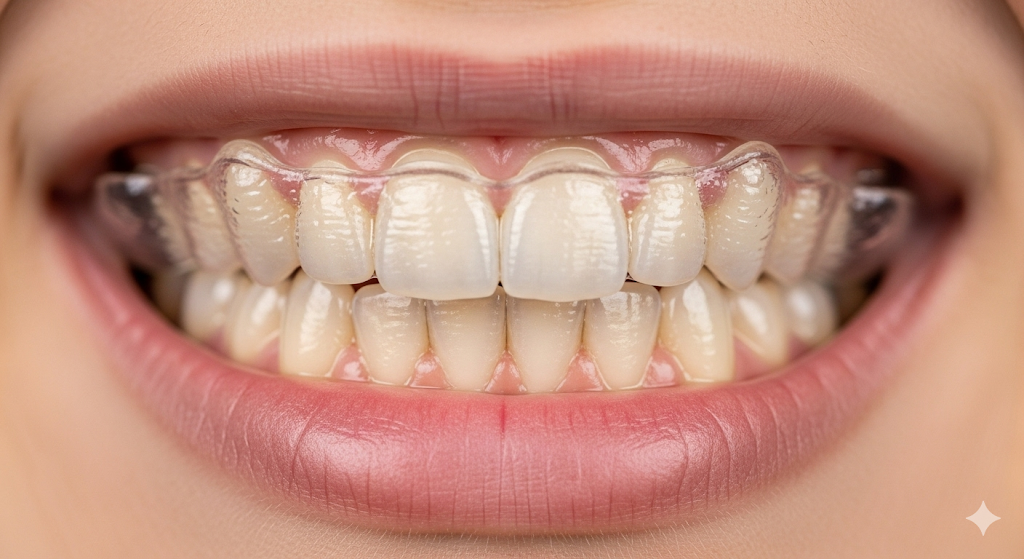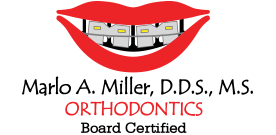What Is an Invisalign Aligner? Understanding How It Straightens Teeth

An Invisalign aligner is a customized, virtually invisible orthodontic appliance crafted from proprietary SmartTrack thermoplastic polymer that exerts gentle, controlled forces on targeted teeth to guide them into predetermined positions. These clear removable trays capture a three-dimensional dental scan, then a computer-generated treatment plan maps out incremental tooth movements. Every aligner in the series is designed to shift specific teeth by fractions of a millimeter, engaging attachment points as anchors to optimize force vectors. As the patient progresses through each set, the aligner trays realign roots, close spaces, and refine occlusion in a predictable sequence.
The science behind tooth movement
Bone remodeling is the physiological process that enables orthodontic adjustments. Pressure applied to the periodontal ligament by the aligner initiates osteoclastic activity on the compression side and osteoblastic rebuilding on the tension side. This cellular response gradually repositions the tooth within the jawbone without surgery or drills. By segmenting complex movements into a series of minor adjustments, clear aligners deliver patient comfort with minimal soreness compared to braces.
Role of SmartTrack material in force application
SmartTrack material is engineered to deliver consistent light forces over extended wear time, enhancing aligner retention and fit throughout treatment. It flexes to seat over attachments, preserving precision of force delivery even as teeth shift. Unlike generic thermoplastic trays, SmartTrack’s multi-layer co-polymers maintain shape memory, reducing aligner fatigue and ensuring each tray functions optimally for the full 7 to 14-day wear period.
What is an Invisalign Aligner?
An Invisalign Aligner is a clear, removable orthodontic tray custom-fabricated to correct malocclusion, including mild to moderate crowding, spacing, and bite discrepancies. Immediately after an H2, the focus keyword must appear, and here it does: Invisalign Aligner trays are designed to be worn approximately 20 to 22 hours per day, removed only for eating, drinking, brushing, and flossing. Each aligner is uniquely numbered and sequenced according to a digitally mapped treatment protocol created by an orthodontist during the ClinCheck planning phase. This phased approach ensures predictable performance and visual progress tracking for both clinician and patient.
Patients often navigate to Invisalign Aligner to discover details on tray materials, attachments, and wear schedules. This resource outlines the role of SmartTrack material and compliance indicators in effective tooth movement. ClinCheck digital simulations complement this understanding by showing incremental shifts every 7 to 14 days. As such, patients gain clarity on how the aligner trays support their orthodontic goals.
What are the key components of the clear aligner treatment process?
Understanding the clear aligner treatment process involves several critical stages, from diagnosis to retention. At the outset, an orthodontist conducts a comprehensive evaluation, including intraoral scans, dental impressions, and study models. The digital mock-up, known as ClinCheck, outlines every planned tooth movement, projected treatment phases, and anticipated refinements. A face-bow registration may be used in complex cases to relate the maxillary arch to cranial base landmarks, ensuring optimal jaw alignment.
Once the treatment plan is approved, a series of custom-made aligner trays is fabricated in an FDA-registered lab. Each tray is trimmed along the gum line for comfort and aesthetics, while attachments—small tooth-colored bumps—are bonded at precise locations to augment grip and force distribution. Compliance indicators in the form of wear-time trackers fade over weeks, reminding patients to adhere to the prescribed schedule. After finishing the initial trays, refinement scans help detect any residual spacing or rotations, and additional refinement aligners are generated as needed.
The clinic’s Orthodontic Services team oversees progress reviews, attachment placements, and refinement scans to ensure optimal outcomes. Monthly or bimonthly check-ins verify aligner fit, gauge periodontal health, and monitor incisal edge positions. Documentation through photographic records and digital X-rays aids in quality control, guaranteeing each stage aligns with predicted benchmarks before moving forward.
What are the benefits of Invisalign aligners?
Invisalign aligners offer aesthetic discretion due to their transparent design, making them virtually undetectable in social and professional settings. Their removability enhances oral hygiene, allowing patients to brush and floss without brackets or wires impeding access. This feature also removes dietary restrictions typically associated with fixed appliances, freeing individuals to enjoy popcorn, nuts, and chewy foods without fear of bracket debonding.
Treatment duration with Invisalign aligners often matches or outpaces that of traditional braces for mild to moderate cases, with many patients achieving significant results in as few as 12 to 18 months. Comfort is amplified by the absence of sharp metal edges, reducing soft tissue irritation. Furthermore, digital monitoring tools enable remote progress checks, minimizing in-office visits while maintaining high standards of care.
Who is an ideal candidate for Invisalign aligners?
Ideal candidates for Invisalign aligners include adults and teens with fully erupted dentitions seeking discreet orthodontic correction. Mild to moderate malocclusions—such as anterior spacing, crowding, overbite, underbite, and crossbite—respond well to clear aligners. Patients must demonstrate commitment to wearing trays at least 20 to 22 hours daily, as compliance heavily influences treatment efficiency and outcome predictability. Complex skeletal discrepancies may still require fixed appliances or orthognathic surgery, though hybrid approaches combining aligners with temporary anchorage devices (TADs) or auxiliary springs can extend clear aligner capabilities in advanced cases.
Individuals with good periodontal health and no active caries or untreated gum disease make better candidates, as stable gingival and bone support enhances tooth movement responsiveness. Coordination with general dentists ensures restorations like crowns or bridges are compatible with attachment placement. Collaborative care with periodontists and prosthodontists preserves overall dental wellness throughout orthodontic treatment.
Steps in the clear aligner treatment process
The clear aligner treatment process unfolds through sequential steps beginning with patient evaluation and ending with long-term retention.
A successful treatment journey commences with a detailed consultation. During this appointment, an orthodontist assesses facial proportions, occlusal relationships, and biomechanical considerations, then captures intraoral scans and panoramic X-rays. Digital models generated by an iTero scanner are uploaded to Invisalign’s cloud platform for ClinCheck planning.
Following plan approval, a dental lab fabricates the prescribed series of aligner sets. Patients receive clear aligners numbered 1 through N, each engineered to advance teeth toward ideal positions. Wear schedules typically last seven to ten days per set, though certain protocols extend to 14 days based on biomechanical demands and patient comfort.
Periodic progress evaluations ensure each stage aligns with the projected treatment path. Minor refinements may involve additional scans and subsequent aligner sets to perfect occlusal contacts and tooth rotations. Once active alignment is complete, retention protocols—including Vivera retainers or Essix retainers—are prescribed to stabilize outcomes and prevent relapse.
Below is a timeline table illustrating core milestones and average timeframes:
| Treatment Phase | Description | Typical Timeframe |
| Initial Consultation & Scans | Clinical exam, digital impressions, X-rays, photos | 1–2 weeks |
| ClinCheck Digital Treatment Plan | Virtual tooth movement mapping | 1–2 weeks for approval |
| Aligner Fabrication & Delivery | Lab production of custom trays | 2–3 weeks |
| Active Alignment Phase | Sequential tray wear with periodic check-ups | 6–18 months |
| Refinement & Fine Tuning | Additional aligners for perfect occlusal relationships | 1–3 months (if needed) |
| Retention Phase | Custom retainers to lock in results | Ongoing |
Comparison: Invisalign aligners vs traditional braces
Choosing between Invisalign aligners and traditional metal braces often hinges on aesthetic priorities, comfort levels, and lifestyle considerations. The table below summarizes how each modality compares across key dimensions:
| Feature | Invisalign Aligners | Traditional Braces |
| Visibility | Nearly invisible | Easily noticeable metal brackets and wires |
| Removability | 100% removable for eating and hygiene | Fixed until brackets are removed |
| Comfort | Smooth plastic minimizes soft tissue irritation | Wires and brackets can cause ulcers |
| Oral Hygiene | Unrestricted brushing and flossing | Food traps around wires complicate cleaning |
| Appointment Frequency | Fewer in-office visits, remote monitoring options | Regular adjustments every 4–6 weeks |
| Dietary Restrictions | None | Avoid sticky, hard foods |
| Treatment Predictability | ClinCheck simulation with digital benchmarks | Manual wire bending with live adjustments |
How to care for Invisalign removable trays?
Proper maintenance of aligner hygiene preserves tray clarity and prevents microbial buildup. After removing each aligner, patients should rinse under cool running water to dislodge saliva and debris. Brushing trays with a soft, dedicated aligner brush and mild, fragrance-free soap or a nonabrasive toothpaste helps maintain transparency. Aligners must never be exposed to hot water, which can warp the plastic and compromise fit.
Soaking trays in a specialized cleaning solution or Invisalign Cleaning Crystals twice weekly dissolves plaque and calcium deposits. Once cleaned, aligners should be air-dried on a clean surface before reinsertion. Regular oral hygiene—brushing twice daily, flossing before tray insertion, and using interproximal brushes—ensures the oral environment remains pristine and reduces the risk of decalcification.
Patients should Contact Us by phone or through the patient portal if they notice cracks, persistent staining, or discomfort with tray seating. Early intervention by the clinical team can prevent treatment delays due to ill-fitting aligners.
Common challenges with Invisalign aligners and solutions
Adopting clear aligners introduces new considerations compared to fixed appliances. Initial speech lisp or slight lisps around “s” and “sh” sounds usually resolve within days as patients acclimate. Attachment debonding may occur if trays are repeatedly forced onto unprepared tooth surfaces; proper seating techniques and routine check-ups can minimize this risk.
Compliance lapses—wearing trays less than the recommended 20 hours—can extend treatment time and yield suboptimal results. Incorporating wear-time trackers or smartphone reminders helps reinforce daily routines. Travel or busy schedules may tempt patients to skip routine changes; advising patients to carry a travel kit with spare aligners, cleaning tools, and a timeline chart safeguards continuous progress.
Addressing minor aligner fit issues through in-office or teledentistry check-ins can keep the case on track
